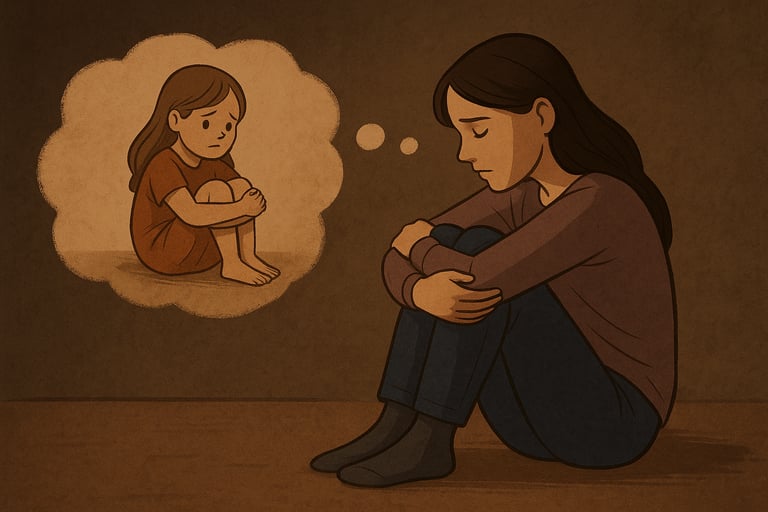Your Inner Child Isn’t Broken – It’s Just Waiting to Be Heard
Discover the truth about your inner child and why reconnecting with it is the key to deep emotional healing.
TRAUMA & HEALING
Team Fossoria
7/27/20252 min read


Have you ever overreacted to something small and wondered, Where did that come from? Or felt an unexplainable sadness even when life seems fine?
Often, these emotions are not coming from your present self. They belong to a younger version of you — your inner child. In this third part of our Trauma and Healing series, we explore what the inner child really is, how it shows up in adulthood, and how listening to it can set you free.
Who Is the Inner Child?
Your inner child is not a fantasy. It’s the emotional part of you formed in early childhood — the memories, fears, and needs you carried when you were small. This part of you holds:
Joy, curiosity, and playfulness
Wounds from neglect, rejection, or fear
Unmet needs that still echo in adulthood
When ignored, these wounds stay stuck and show up as anxiety, shame, or relationship struggles.
Signs Your Inner Child Is Calling for Attention
The inner child speaks through emotions, not words. You might notice it in:
Overreacting to criticism
Fear of abandonment
People-pleasing or avoiding conflict
Feeling "not good enough"
Sudden emotional flashbacks to childhood memories
These reactions are not flaws — they’re signals.
Why Healing the Inner Child Matters
When the inner child is unseen, it silently drives your decisions and relationships.
Psychologists like John Bradshaw (Homecoming) and Pete Walker (Complex PTSD) emphasize that true healing happens when you acknowledge and nurture this younger self.
Healing isn’t about blaming the past. It’s about giving yourself now what you needed then.
How to Reconnect With Your Inner Child
You don’t need to dig up every painful memory. You only need to listen. Here’s how:
Inner Dialogue: Speak kindly to yourself in moments of distress.
Reparenting: Offer yourself the safety, care, and validation you lacked.
Creative Expression: Draw, write, or play — activities your child self enjoyed.
Therapeutic Support: Trauma-informed therapy or EMDR can guide deeper work.
Each gentle step tells your inner child: I see you. You’re safe now.
Your inner child isn’t broken. It’s waiting to be heard, held, and loved by the adult you’ve become.
The moment you reconnect with that part of yourself, you stop reliving old pain — and start creating a new story.
In the next part of this series, we’ll dive into the hidden cycles of self-sabotage — and why what feels like failure is often your body’s way of protecting you.
References & Further Reading:
Bradshaw, John. Homecoming: Reclaiming and Championing Your Inner Child. Bantam Books, 1990.
Walker, Pete. Complex PTSD: From Surviving to Thriving. Azure Coyote Books, 2013.
Levine, Peter. Waking the Tiger: Healing Trauma. North Atlantic Books, 1997
